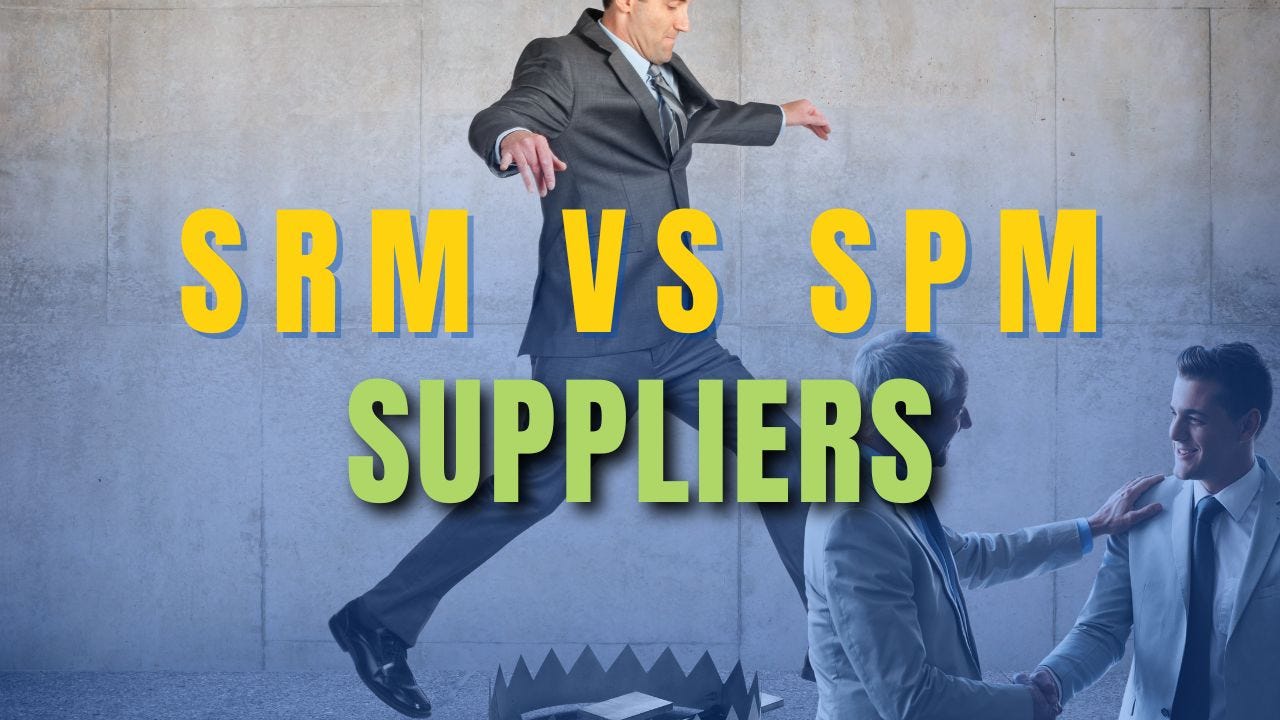Supplier Performance Management vs. Supplier Relationship Management: A Critical Distinction for 2025
Editorial Desk
In the evolving landscape of procurement, the terms Supplier Performance Management (SPM) and Supplier Relationship Management (SRM) are often used interchangeably. However, this conflation can be detrimental to procurement strategies. As we head into 2025, the distinction between these two paradigms will shape the ability of organizations to unlock supplier-driven innovation, resilience, and competitive advantage.
Understanding the Core Difference
Supplier Performance Management (SPM) focuses on measuring and managing the outputs of supplier activities against predefined criteria—such as on-time delivery, quality, and compliance. It is rooted in oversight, metrics, and continuous performance improvement.
Supplier Relationship Management (SRM), on the other hand, emphasizes collaboration and strategic engagement with suppliers to drive mutual value creation, innovation, and long-term partnerships. While SPM is transactional, SRM is transformational.
Both are critical, but conflating the two can lead to missed opportunities. Leading organizations in 2025 will distinguish between the two and invest in SRM as a strategic lever for growth.
SPM in Action: The Compliance and Accountability Mechanism
SPM is essential for ensuring suppliers meet contractual obligations. Consider the automotive industry. Companies like Ford and Volkswagen leverage robust SPM frameworks to track supplier performance across vast, complex supply chains. Metrics such as defect rates, delivery adherence, and environmental compliance form the backbone of supplier scorecards.
One notable example is Intel, which monitors thousands of performance indicators across its supply base to ensure suppliers adhere to stringent quality requirements. When suppliers fall short, corrective action plans are swiftly deployed, reinforcing performance expectations.
However, SPM alone is insufficient for long-term competitive advantage. While it identifies issues, it rarely cultivates the deeper collaboration necessary to drive innovation or mitigate systemic risk.
SRM in Action: The Collaborative Growth Engine
SRM extends beyond performance oversight. It fosters joint development, shared risk management, and innovation. A prime example is Toyota’s keiretsu model, where strategic suppliers are treated as extensions of the enterprise. This close-knit collaboration enables Toyota to co-develop groundbreaking technologies while maintaining operational agility.
Similarly, Starbucks employs SRM by co-investing in supplier farms and supporting sustainable agricultural practices. This not only ensures long-term supply stability but also differentiates Starbucks in the market through traceable, ethically sourced products.
SRM focuses on trust, transparency, and shared goals—elements that SPM often overlooks. When effectively implemented, SRM transforms suppliers into strategic allies capable of delivering unparalleled competitive advantages.
Why Procurement Leaders Need Both
Procurement leaders in 2025 must embrace both SPM and SRM but understand their application within the procurement lifecycle.
SPM is ideal for ensuring day-to-day operational excellence and holding suppliers accountable to established KPIs.
SRM is essential for long-term strategic initiatives, fostering innovation, and aligning suppliers with overarching corporate objectives.
For instance, pharmaceutical giants like Pfizer blend SPM to ensure quality standards for active pharmaceutical ingredients (APIs) while employing SRM to co-develop new drug formulations with select partners. This dual approach safeguards operational excellence while accelerating innovation cycles.
The Pitfall of Over-Reliance on SPM
A procurement organization that leans too heavily on SPM risks creating adversarial supplier relationships. Suppliers subjected to relentless scrutiny without opportunities for collaboration often disengage, withholding innovations or seeking alternative clients.
One striking example is Nokia’s supplier engagement model in the early 2000s. While its SPM mechanisms were robust, Nokia failed to foster deeper collaboration with critical suppliers. By the time Nokia recognized the need for strategic supplier partnerships, competitors like Apple had already cultivated ecosystems of co-innovation, leading to Nokia’s decline.
The ROI of SRM Investments
Conversely, SRM unlocks strategic benefits that extend far beyond cost savings. Companies like Procter & Gamble (P&G) exemplify this through their Connect + Develop initiative, a program designed to harness supplier innovation for new product development. By fostering supplier relationships rather than merely monitoring performance, P&G consistently delivers market-leading innovations.
Integrating SPM and SRM for Holistic Supplier Management
Leading organizations in 2025 will integrate SPM and SRM into a seamless supplier management framework. This integrated approach:
Ensures Compliance and Accountability - Through rigorous performance tracking (SPM).
Drives Strategic Growth - By nurturing supplier relationships to unlock innovation (SRM).
Enhances Resilience - Combining performance oversight with collaborative risk mitigation.
Accelerates Time-to-Market - Engaging suppliers early in the product development cycle.
Amazon, for example, seamlessly blends SPM to ensure supply chain reliability while investing in SRM to co-develop technologies for logistics and warehousing.
Procurement leaders can no longer afford to choose between SPM and SRM. As we approach 2025, the integration of both will be the hallmark of procurement excellence. While SPM guarantees operational performance, SRM drives strategic innovation and growth.
The organizations that master this balance will cultivate supplier ecosystems capable of delivering sustained competitive advantage. In an era defined by disruption and opportunity, procurement leaders must champion both performance and partnership to secure their organizations' futures.


